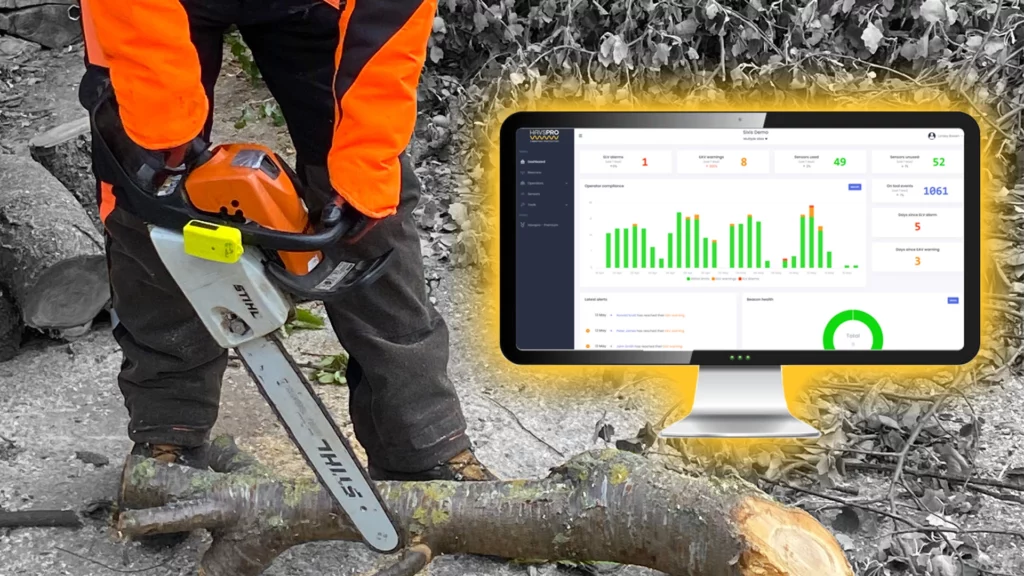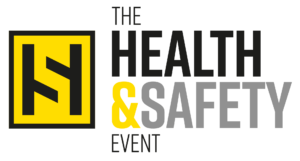At HAVSPRO our goal is to make hand arm vibration and its associated health conditions a thing of the past. But how?
The HSE regulations (The Vibration at Work Regulations 2005) state that there is no need to continuously measure and monitor vibration levels.
In paragraph 149 of the regulations, it states: There is no legal requirement under the Vibration Regulations for continual monitoring and recording of vibration exposure. Using log books and tool-timers, and continual monitoring, can distract you from your duties to eliminate or reduce vibration risks. Their principal argument for this is because they would rather businesses invest their time and money in eliminating the risk, rather than managing it.
But what happens when you can’t eliminate vibration exposure, or you have done so to as low as reasonably practicable (ALARP)?
Measuring and monitoring
![]() The Regulations clearly state what the EAV (exposure action value) and ELV (exposure limit value) are for operatives. The EAV is 100 HSE points and means action MUST be taken to reduce the risk of over-exposure at that point. The ELV means the operative has reach their absolutely daily limit of vibration exposure (400 HSE points) and should NOT be exposed to any more vibration that day.
The Regulations clearly state what the EAV (exposure action value) and ELV (exposure limit value) are for operatives. The EAV is 100 HSE points and means action MUST be taken to reduce the risk of over-exposure at that point. The ELV means the operative has reach their absolutely daily limit of vibration exposure (400 HSE points) and should NOT be exposed to any more vibration that day.
At HAVSPRO, we have developed technology that measures and monitors vibration levels in real-time, as they are experienced by the operator. We have combined this with a pro-active alert system that gives employers 4 opportunities to prevent an operative reaching their ELV.
Vibration levels are recorded on the tool or device being used, and each time a user reaches their EAV an amber warning is visible to the operator AND a text or email is sent to the employer. When the operator has experienced 90% of their ELV, a flashing red warning is visible to the operator AND a text or email is sent to the employer. And solid red warnings are visible when 100% of the ELV is reached in addition to the email/text sent to the employer.
This system gives employers and operatives 4 opportunities to proactively take actions to eliminate or reduce the vibration risk BEFORE it causes significant damage.
This data is also captured and fed into a sophisticated cloud-based reporting system that displays the data in clear dashboards and reports that allow employers to review vibration data, and actions taken. This means you can better plan your business operations to reduce vibration exposure and the associated risks to ALARP. Data-driven decision-making from HAVSPRO means you won’t waste your money or time on solutions that don’t result in a lowered risk of vibration over-exposure.
So, there are a minimum of 3 (or 4 with HAVSPRO) opportunities to take action to reduce or eliminate vibration exposure before an operatives ELV is reached, but how can employers make the most of these opportunities?
Action
If employers don’t act on the vibration data they are capturing, (on paper, via wearable technology or through continuous measuring and monitoring), the risk isn’t being managed and you aren’t complying with the regulations.
There are many different forms of action that can be taken to reduce or eliminate the risk of vibration over-exposure, so we’ve taken a closer look at a few of the most common:
Training
With the HAVSPRO vibration measuring and monitoring system, you can clearly see which operators are consistently reaching their EAVs and ELV. When this is happening, there could be a number of reasons that need to be investigated.
The most common reason for this happening is that the operator isn’t using the tool as intended. There could be a number of reasons for this; they are holding the tool incorrectly, they are using the wrong consumables, they are using the wrong tool for the job, or they simply aren’t using it as intended.
Some additional training will highlight the issue and reinforce best practise. A record of this training can then be stored on the HAVSPRO reporting system to show action has been taken to reduce the risk of vibration exposure.
But the only way to ensure this training has been effective is to continuously measure and monitor the vibration levels this operative is exposure to. With the HAVSPRO system, you can quickly and easily identify what levels an operative is producing on specific, individual tools.
This pinpoint training can only be implemented and monitored for effectiveness with a system like HAVSPRO.
Change tool / use alternative
Another action that can be taken when an operative reaches their EAV is to change the tool they are using. An alternative may do the job with lower vibration levels or even none.
Rotate tasks
When working in a team, even of two, a rotation of tasks when one reaches their EAV it is an action that seems very simple to implement but is often overlooked.
Have a break
Simply having a break from the task that is exposing an operative to vibration levels can reduce the risk. And a break doesn’t mean not working or being efficient. It could be that an operative has a break from the tool to clear up and tidy their working area. Or perhaps a break to attend some administrative tasks such as calls or paperwork. All of which would need to be done as part of the standard working day but can be done as part of vibration exposure management.
Check the consumables
The level of vibration emitted by a tool using the correct drill bit for the material being drilled will be significantly less than a drill that is not using the correct or blunt drill bit.
With HAVSPRO, you can identify the vibration levels being emitted by each individual, easily identifiable tool. If you are getting regularly high readings from a particular tool, the action you could take is to check the suitability and condition of the consumables being used. This should feed into any training that you are also undertaking to manage the risk of hand arm vibration.
Tool servicing
The Provision and Use of Work Equipment Regulations 1998 (PUWER) state that all equipment required to complete work tasks should be maintained in a safe condition and inspected to ensure it is correctly installed and does not subsequently deteriorate.
The action here is to ensure all tools and devices are up to date with their servicing history and to swap tools out of circulation if they over, or approaching, their next service date.
This sounds like quite an arduous, time-consuming action, just to eliminate vibration levels, doesn’t it? But with HAVSPRO, it’s just the click of a button and the service history for all your tools is at your fingertips – or you could simply rely on the automated email reminder to drop into your inbox!
REMEMBER: A holistic approach to managing the risk of hand arm vibration exposure will combine the use of several action types to reduce the risk to ALARP. One action type alone, is not enough.
Repeat
The only thing left to ensure you are managing the risk of hand arm vibration ALARP is to make sure you are measuring, monitoring and taking action as part of day-to-day activity, on a continuous basis. It is everyone’s responsibility to make sure they are doing everything they can to manage the risk of HAVS and other related health conditions.
By making measure, monitor, act part of the culture of the business, we can work towards a future where hand arm vibration health conditions are a thing of the past – together we can all #MakeHAVSHistory.
Summary
Without continuous measuring and monitoring, how can you act to ensure you are reducing the risk wherever possible and protecting your workers, and business, from breaching EAV and ELV limits?
The simple answer is that you can’t. Unless you are measuring, monitoring, and acting, on a continual basis, you simply aren’t going to be able to proactively protect your staff, and your business, from vibration over-exposure, where it cannot be eliminated.
Download the HAVSPRO Brochure
Discover how HAVSPRO monitors vibration levels accurately and triggers alerts to protect your staff and organisation against the risks of HAVS and WBV (whole body vibration).
It monitors individual tool vibration levels and the exposure each person has to it.
HAVSPRO then collates all this data and creates customisable reports to help you prevent overexposure.
Find out everything you need to know in our brochure – simply complete the form!
 by
EngageBay
by
EngageBay
Find out more about HAVSPRO and how it can help you protect your staff and business: 01332 547 148 or you can download our Employers Guide to HAVS


